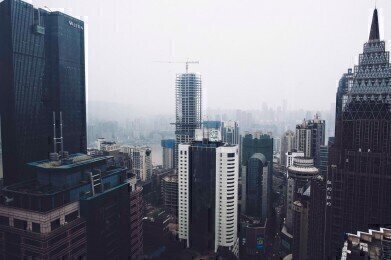Air Clean Up
Are China’s Pollution Problems Too Far-Gone?
Feb 02 2015
As China’s air pollution remains at a staggering high, there are increasing concerns over its devastating environmental, economic and health impacts.
Images of China’s densely befogged cities, its mask-clad inhabitants and its diseased crops have featured so pervasively in global media that we are in danger of becoming desensitized to the costs of such unprecedented levels of air pollutants.
China’s air pollution problem is well documented. In fact, Chinese power plants emit as much NOx as all the passenger cars in the world. Consequently, many scientists and designers have suggested solutions, such as an enormous sealed bubble containing a clean air supply for Beijing among them. And recently a movable air-purifying skyscraper was proposed.
But can anything be done to address the crisis?
Recent research suggests that by implementing three simple changes pollution can be significantly reduced. Moreover, the suggested measures are economically viable when offset against the economic costs of health services and impact on the tourist industry.
As it stands: the human cost
The rapid growth in China’s industry over the last thirty years is at the root of its burgeoning economy. However, its economic growth has been matched by an exponential rise in pollutant levels.
Earlier this year, the concentration of air pollutants in China’s major urban areas were measured at a record high, registering at an astonishing twenty times the safe level recommended by the World Health Organization.
Though WHO recommends a safe level of PM 2.5 particles (those particles small enough to penetrate the lungs) as a concentration of below 25 micrograms per cubic meter, recordings in Beijing in 2014 registered a concentration exceeding 500 micrograms per cubic meter.
The staggering figure raises considerable concerns over the long-term health risks posed to those exposed to such elevated concentrations of air pollutants. The adverse health risks caused by prolonged exposure to such high concentrations of air pollutants range from inflammation of respiratory systems, a reduction of oxygen supplies reaching the heart and serious conditions such as heart disease or lung cancer.
The agricultural industry: ‘smog panic’
As well as a posing health threats, the toxic levels of air pollution is taking its toll on China’s agricultural productivity. Chinese scientists have compared the effects of toxic air pollution to a nuclear winter, significantly reducing crop yield.
The pollutants have been shown to stick to the surface of greenhouses and block natural light causing slowed rates of photosynthesis. At a greenhouse farm in Beihing’s Changping district, seedlings which would be expected to produce seedlings within 20 days were taking over 2 months to sprout.
Government response so far
Though the Chinese government have taken some steps to reduce pollution, mandating more eco-friendly fuels and that certain motor vehicles and other energy inefficient equipment be discarded, these measures have so far not proven sufficient to reduce pollution below levels deemed a health hazard.
Moreover, the health costs, loss in productivity and loss of tourism associated with China’s levels of pollution amount to a total loss of 6.5 % of the country’s overall GDP (approximately $535 billion in 2012).
A possible solution?
The enormous health and economic costs call for a more radical government response in tackling the crisis head on.
But can there be an effective solution? And, importantly - if the solution is to be met with political will - can it be economically viable?
Recently published research suggests so. Findings of a report published by RAND Corporation show that China’s pollution can be significantly reduced at a cost equal to less than half what the country currently loses in costs caused by pollution.
To address the problem, the following three steps are recommended:
- Replacing all coal with natural gas for both residential and commercial heating.
- Replacing half of China‘s coal-fired electric power generation with renewables or nuclear power.
- Scrapping highly polluting vehicles.
Though an annual investment of $215 billion would be required to see these changes through, this would be offset by the significantly higher costs accrued by air pollution (6.5 % of China’s GDP, approximately $535 billion) at the same time as it dramatically reduces pollution, clarifies its cities’ air quality and reverses the health risks which currently menace a large portion of its populace.
Events
Apr 22 2024 Hannover, Germany
Apr 23 2024 Kuala Lumpur, Malaysia
Apr 24 2024 Sao Paulo, Brasil
May 05 2024 Seville, Spain
May 13 2024 Munich, Germany














